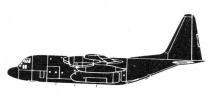Incident Overview

Description
A Canadair CRJ-200 cargo plane of West Air Sweden was destroyed when it impacted remote terrain near Akkajaure, Sweden. Both pilots were killed. The aircraft departed Oslo-Gardermoen Airport, Norway at 23:10 hours local time on a mail and package flight to Troms?, Norway. The take-off, departure and climb to cruising altitude, flight level 330, were performed according to normal procedures. The flight was uneventful until one minute and 20 seconds before the impact. The event started at 00:19:20 hrs, one hour and ten minutes into the flight in night time conditions of darkness without moonlight, clouds or turbulence. The lack of external visual references meant that the pilots were totally dependent on their instruments which consisted of three independent attitude indicators. Suddenly a very fast increase in pitch was displayed on the left attitude indicator. The pilot in command, who was the pilot flying and seated in the left seat exclaimed a strong expression. The displayed pitch change meant that the pilot in command was subjected to a surprise effect and a degradation of spatial orientation. The autopilot was, most probably, disconnected automatically, a “cavalry charge” aural warning and a single chime was heard, the latter most likely as a result of miscompare between the left and right pilots’ flying displays (PFD). Both elevators moved towards nose down and nose down stabilizer trim was gradually activated from the left control wheel trim switch. The airplane started to descend, the angle of attack and G-loads became negative up to -1 G. Both pilots exclaimed strong expressions and the co-pilot said “come up”. About 13 seconds after the start of the event the crew were presented with two contradictory attitude indicators with red chevrons pointing in opposite directions. At the same time none of the instruments displayed any comparator caution due to the PFDs declutter function in unusual attitude. Bank angle warnings were heard and the maximum operating speed and Mach number were exceeded 17 seconds after the start of the event, which activated the overspeed warning. The speed continued to increase, a distress call was transmitted and acknowledged by the air traffic control and the engine thrust was reduced to flight idle. The crew was active during the entire event. The dialogue between the pilots consisted mainly of different perceptions regarding turn directions. They also expressed the need to climb. At this stage, the pilots were probably subjected to spatial disorientation. The aircraft collided with the ground one minute and twenty seconds after the initial height loss. Investigation revealed that the erroneous attitude indication on PFD 1 was caused by a malfunction of the Inertial Reference Unit (IRU 1). The pitch and roll comparator indications of the PFDs were removed when the attitude indicators displayed unusual attitudes. In the simulator, in which the crew had trained, the corresponding indications were not removed. During the event the pilots initially became communicatively isolated from each other. Factors as to cause and contributing factors: The accident was caused by insufficient operational prerequisites for the management of a failure in a redundant system. Contributing factors were: – The absence of an effective system for communication in abnormal and emergency situations. – The flight instrument system provided insufficient guidance about malfunctions that occurred. – The initial manoeuver that resulted in negative G-loads probably affected the pilots’ ability to manage the situation in a rational manner. Factors as to risk The fact that fault descriptions regarding aircraft and its components are reported in a less detailed manner might imply that the faults will not be identified and corrected in an efficient way. This can in turn lead to a flight safety issue as, for instance, intermittent faults cannot always be detected by general tests.
Primary Cause
Faulty Inertial Reference Unit (IRU 1) malfunction, leading to incorrect attitude indications and automatic autopilot disconnection.Faulty Inertial Reference Unit (IRU 1) malfunction, leading to incorrect attitude indications and automatic autopilot disconnection.Share on:





